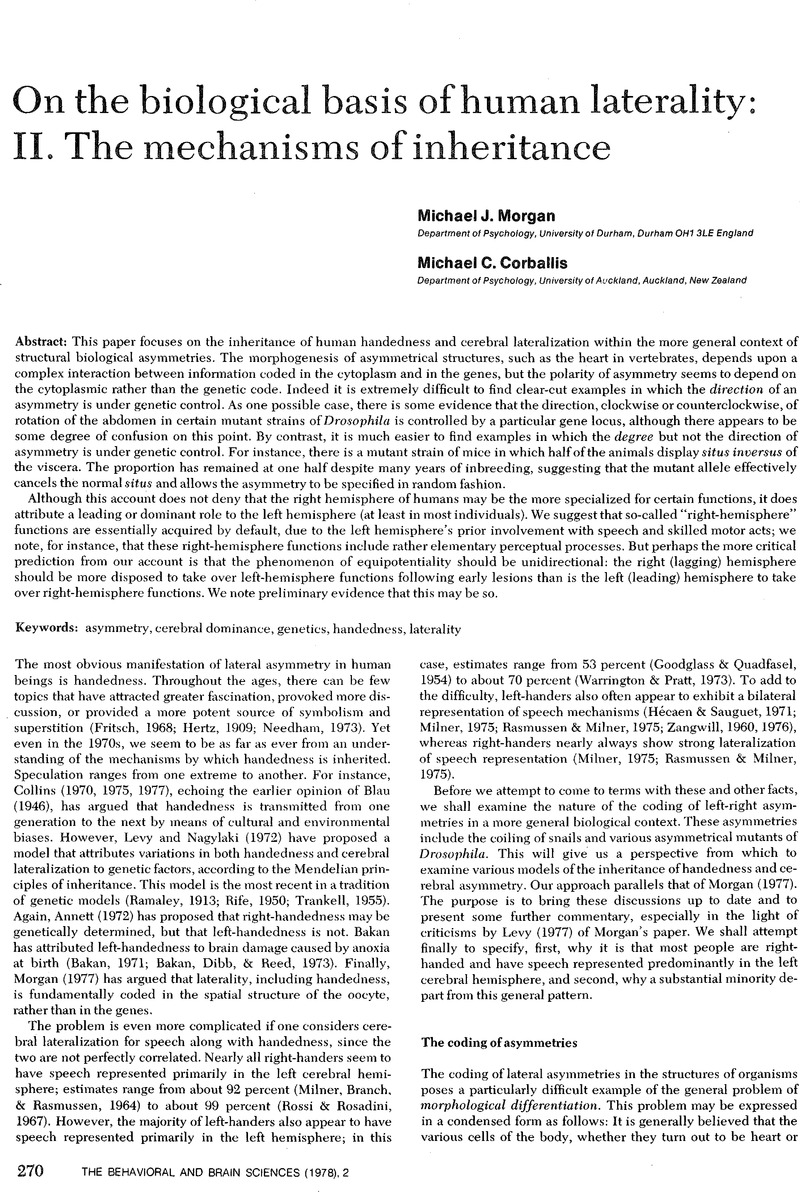Crossref Citations
This article has been cited by the following publications. This list is generated based on data provided by Crossref.
Policansky, David
1982.
Flatfishes and the inheritance of asymmetries.
Behavioral and Brain Sciences,
Vol. 5,
Issue. 2,
p.
262.
Morgan, M. J.
and
Corballis, M. C.
1982.
Symmetrical inheritance of asymmetry in the flounder?.
Behavioral and Brain Sciences,
Vol. 5,
Issue. 2,
p.
265.
1983.
Human Laterality.
p.
203.
GREEN, ANDY J
1997.
Asymmetrical turning during spermatophore transfer in the male smooth newt.
Animal Behaviour,
Vol. 54,
Issue. 2,
p.
343.
Bisazza, Angelo
J. Rogers, L
and
Vallortigara, Giorgio
1998.
The Origins of Cerebral Asymmetry: A Review of Evidence of Behavioural and Brain Lateralization in Fishes, Reptiles and Amphibians.
Neuroscience & Biobehavioral Reviews,
Vol. 22,
Issue. 3,
p.
411.
Lucentini, Liva
Carosi, Antonella
Erra, Rocco
Giovinazzo, Giancarlo
Lorenzoni, Massimo
and
Mearelli, Mario
1998.
Fluctuating asymmetry in Perch,Perca fluviatilis(Percidae) from three lakes of the Region Umbria (Italy) as a tool to demonstrate the impact of man‐made lakes on developmental stability.
Italian Journal of Zoology,
Vol. 65,
Issue. sup1,
p.
445.
Panger, Melissa A.
1998.
Hand Preference in Free-Ranging White-Throated Capuchins (Cebus capucinus) in Costa Rica.
International Journal of Primatology,
Vol. 19,
Issue. 1,
p.
133.
Roth, Eric D
2003.
‘Handedness’ in snakes? Lateralization of coiling behaviour in a cottonmouth, Agkistrodon piscivorus leucostoma, population.
Animal Behaviour,
Vol. 66,
Issue. 2,
p.
337.
Palmer, A. Richard
2005.
Variation.
p.
359.
Heatwole, Harold
King, Peter
and
Levine, Samuel G.
2007.
Laterality in coiling behaviour of snakes: Another interpretation.
Laterality: Asymmetries of Body, Brain and Cognition,
Vol. 12,
Issue. 6,
p.
536.
Palmer, A. Richard
2016.
What determines direction of asymmetry: genes, environment or chance?.
Philosophical Transactions of the Royal Society B: Biological Sciences,
Vol. 371,
Issue. 1710,
p.
20150417.
Takahashi, Mizuki K.
McGuire, Brigid
and
Horsley, Luna
2024.
Long‐term injury records reveal the role of biting in male–male combat in the Japanese giant salamander.
Freshwater Biology,
Vol. 69,
Issue. 12,
p.
1830.


